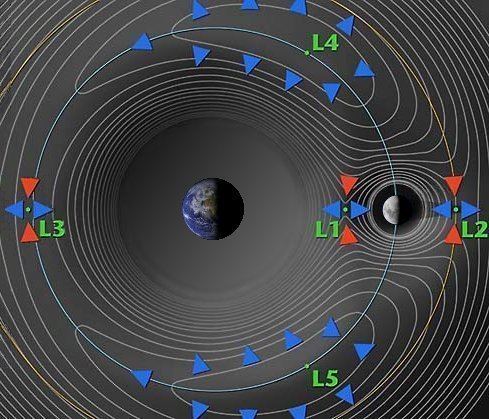 | ||
Kordylewski clouds are large concentrations of dust that may exist at the L4 and L5 Lagrangian points of the Earth–Moon system. They were first reported by Polish astronomer Kazimierz Kordylewski in the 1960s, but there is still debate as to whether they actually exist, due to their extreme faintness. They may be transient phenomena, as the L4 and L5 points are unstable, due to the perturbations of the inner planets.
Contents
Discovery and observation
The existence of a photometrically confirmable concentration of dust at the libration points was predicted by Professor J. Witkowski in 1951.
The clouds were first seen by Kordylewski in 1956. Between 6 March and 6 April 1961 he succeeded in photographing two bright patches near the L5 libration point. During the observation time the patches hardly appeared to move relative to L5. The observations were taken from the mountain Kasprowy Wierch.
In 1967, J. Wesley Simpson made observations of the clouds using the Kuiper Airborne Observatory.
The existence of the Kordylewski clouds is still under dispute. The Japanese Hiten space probe, which passed through the libration points to detect trapped dust particles, did not find an obvious increase in dust levels above the density in surrounding space.
Appearance
The Kordylewski clouds are a very faint phenomenon, comparable to the brightness of the gegenschein. They are very difficult to observe from Earth but may be visible to the unaided eye in an exceptionally dark and clear night sky. Most claimed observations have been made from deserts, at sea, or from mountains. The clouds appear somewhat redder than the gegenschein, indicating that they may be made of a different kind of particle.
The Kordylewski clouds are located near the L4 and L5 Lagrange points of the Earth–Moon system. They are about 6 degrees in angular diameter. The clouds can drift up to 6 to 10 degrees from those points. Other observations suggest they move around the libration points in ellipses of about 6 by 2 degrees.
